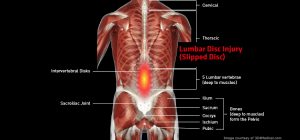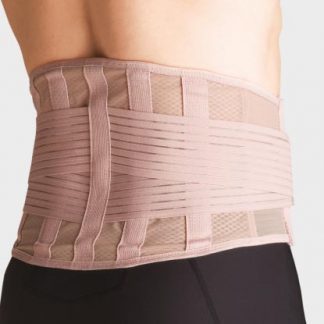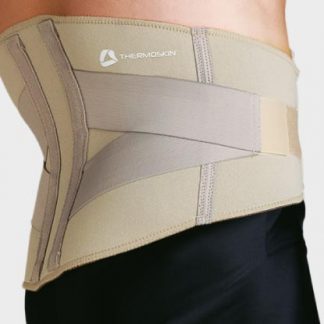Lumbar Disc Injury (Slipped Disc)
Anatomy
The intervertebral disks are composed of a connective tissue ring (anulus fibrosis) and a core of a pulpy, semifluid centre (nucleus pulposus). They lie between adjacent vertebrae in the spine, forming a cartilaginous joint between the two vertebras to which they attach. The discs allow the spine to move freely and act as shock absorbers during weight bearing activities.

Mechanism of Injury
- Isolated flexion or combined flexion rotation movements of the spine may tear some or all of the fibres of the anulus fibrosis. When only some of the fibres are torn, the nucleus pulposus is contained, however the disc will bulge either posteriorly or posterolaterally, depending on where the tear is. When all of the fibres are torn, the nucleus pulposus (semifluid centre) will herniate into the vertebral canal. Either bulging or herniation can cause compression of spinal nerve roots as they leave the vertebral canal.
- ‘Sciatica’ refers specifically to pain down the back of the thigh and leg, along the course of the sciatic nerve, caused by inflammation of this nerve. It may be the result of compression by a disc bulge or herniation of the nerve roots that form the sciatic nerve as they leave the spinal column however there are also other causes.
Symptoms
- Central or unilateral low back pain, generally aggravated by flexion.
- If there is compression of a nerve root, a sharp, shooting pain may radiate into the leg on the side of the affected nerve root. This pain may increase on exertion. This may also be altered sensation (numbness or pins and needles), diminished reflexes, and decreased muscle power.
- If there is no nerve root compression, pain may also radiate down the buttock and back of the thigh. This is more of a dull pain and does not usually extend past the knee.
- Impaired mobility due to pain and stiffness.
- Muscle tightness in the back and sometimes buttock.
Treatment
Please consult with your medical professional for a complete diagnosis and treatment plan.
-

ELASTIC BACK STABILISER
Provides compression and support for general lower back dysfunctions. Elastic Back has 4 internal stays for additional support, adjustable elastic side straps for extra compression, and lightweight breathable material for wearer comfort.
-

THERMAL LUMBAR SUPPORT
Provides pain relief and compression for muscle injuries and general lower back dysfunctions; injuries to the lumbar discs and the sacro-illiac joint. This product has two flexible internal stays for additional support and adjustable elastic side straps for extra compression.
